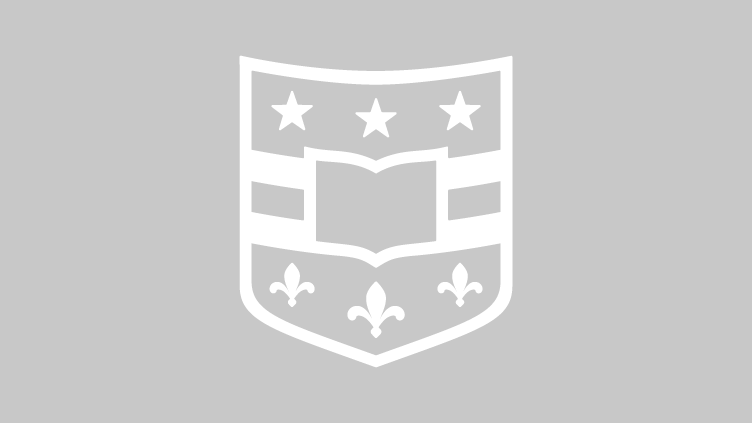WUSTL alumna selected as a 2013 National Geographic Emerging Explorer
Bethany Ehlmann, who graduated from WUSTL in 2004 with a bachelor’s degree in earth and planetary science, has been selected as one of 17 Emerging Explorers by National Geographic. The Emerging Explorers Program recognizes
and supports uniquely gifted and inspiring adventurers, scientists and
innovators who are at the forefront of discovery, adventure and global
problem-solving while still early in their careers.
Morris receives top Alzheimer’s Association honor
WUSTL neurologist John C. Morris, MD,
has received the Alzheimer’s Association’s Medical and Scientific Award for
2013.
Washington University teams each win $50,000 Arch Grants in startup competition
Four startup companies with ties to Washington
University in St. Louis have received $50,000 each in the Arch Grants
2013 Global Startup Competition designed to stimulate and support the
early stage entrepreneurial community in St. Louis.
I-CARES announces 2013 funded research projects
The International Center for Advanced Renewable Energy
and Sustainability (I-CARES) has announced the award winners for its
2013 Call for Proposals. This year, special emphasis was placed on projects related to
climate change.
Supreme Court decision closes loophole in Monsanto’s business model
The Supreme Court’s unanimous opinion in Bowman v. Monsanto
holds that farmers who lawfully obtain Monsanto’s patented, genetically
modified soybeans do not have a right to plant those soybeans and grow a
new crop of soybeans without Monsanto’s permission. “The Court closed a
potential loophole in Monsanto’s long-standing business model, prevents
Monsanto’s customers from setting up ‘farm-factories’ for producing
soybeans that could be sold in competition with Monsanto’s soybeans, and
it enables Monsanto to continue to earn a reasonable profit on its
patented technology,” says Kevin Collins, JD, patent law expert and
professor of law at Washington University in St. Louis
Alzheimer’s markers predict start of mental decline
School of Medicine researchers have shown that several markers for presymptomatic Alzheimer’s disease identified in recent years are accurate predictors of Alzheimer’s years before symptoms develop. Catherine Roe, PhD, says researchers found no differences in the accuracy of the biomarkers.
Engineers in training
High school students competed at the annual Boeing Engineering Challenge at the
WU Field House May 3.
About 100 area high school students from six school
districts on 25 teams visited the WUSTL campus to take part in the Boeing Challenge. The teams competed to determine which glider had the farthest flight, straightest
path, longest hang time or highest quality of flight. Pictured are Eureka High School students who built a glider.
Scientists show how nerve wiring self-destructs
Many medical conditions destroy nerve axons, the long wires that transmit signals to other parts of the body. Now, researchers have found a way the body can remove injured axons, identifying a potential target for new drugs that could prevent the inappropriate loss of axons and maintain nerve function.
Faulty memory finds a new culprit
Memory problems related to day-to-day activities — one of the largest complaints of people with Alzheimer’s diease — may be due to older adults’ inability to segment their daily lives into discrete experiences, suggests new psychology research from Washington University in St. Louis. How we perceive events in our current lives influences how we remember them in the future, the study finds.
Early responses coming in on Next Generation Science Standards
The Next Generation Science Standards have been out for a month now. How are they being received? Michael Wysession, who helped lead the effort to define the national standards, says there haven’t been any major surprises, in part because there is strong economic motivation to bring American students up to the level of the scientifically literate students they will be compete with in the international job marker.
Older Stories
